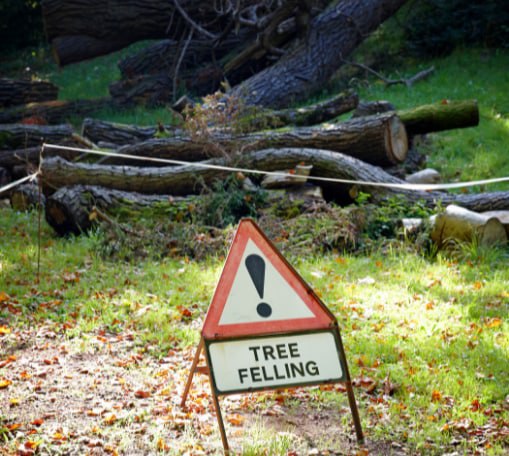
Introduction: When removing tree stumps from your property, you have two primary options: grinding and removal. While both methods effectively eliminate stumps, they differ in their environmental impact. In this blog post, we’ll explore the environmental considerations of stump grinding versus stump removal to help you make an informed decision that aligns with your sustainability goals.
Stump Grinding: A Sustainable Solution
- Stump grinding involves mechanically grinding the stump into small wood chips using a specialised grinder. One of the key environmental benefits of stump grinding is that it allows the organic material of the stump to remain in the soil, where it decomposes naturally and enriches the soil with nutrients. This process promotes soil health and microbial activity, supporting the growth of new vegetation and contributing to ecosystem resilience.
Additionally, stump grinding minimises soil disturbance and disruption to surrounding vegetation, preserving the integrity of the ecosystem. Grinding stumps below ground level means there’s no need for extensive excavation or heavy equipment, reducing the carbon footprint associated with the removal process. Overall, stump grinding offers a sustainable and eco-friendly solution for eliminating tree stumps while minimising environmental impact.
Stump Removal: Considerations and Challenges
- On the other hand, stump removal involves physically extracting the entire stump, along with its root system, from the ground. While stump removal effectively eliminates the visible stump, it can have more significant environmental consequences than stump grinding. The excavation process required for stump removal can disrupt soil structure, disturb beneficial microorganisms, and damage nearby vegetation roots, leading to soil erosion and compaction.
Furthermore, stump removal often requires heavy machinery, such as excavators or backhoes, which consume fossil fuels and emit greenhouse gases. The transportation and disposal of the extracted stump also contribute to environmental impacts, particularly if it’s disposed of in landfills rather than being repurposed or recycled. While stump removal may offer immediate results, it can have long-term consequences for soil health and ecosystem integrity.
Making an Informed Decision
- When deciding between stump grinding and stump removal, it’s essential to consider the environmental implications of each method. If sustainability and minimising environmental impact are priorities for you, stump grinding is the preferred option. Not only does it preserve soil health and ecosystem integrity, but it also reduces carbon emissions and promotes natural decomposition processes.
However, if stump removal is necessary due to specific site constraints or preferences, there are steps you can take to mitigate its environmental impact. For example, you can opt for manual removal methods that minimise soil disturbance and avoid using heavy machinery whenever possible. Additionally, consider repurposing the extracted stump as mulch or wood chips rather than disposing it in a landfill.
Conclusion: In conclusion, stump grinding and stump removal offer effective solutions for eliminating tree stumps from your property. However, stump grinding is a more environmentally sustainable option, as it preserves soil health, minimises disturbance to surrounding vegetation, and reduces carbon emissions. By understanding the environmental considerations of each method, you can make an informed decision that promotes sustainability and aligns with your environmental values.
Call us on: 01304 796896
Click here to find out more about Dover Tree Surgery
Click here to complete our contact form and see how we can help with your tree’s needs.